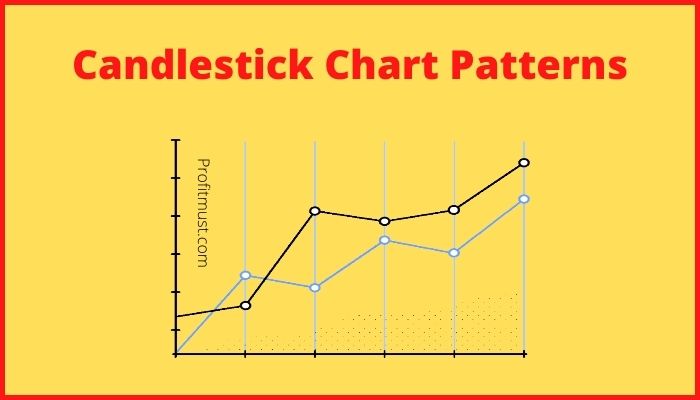When you start tracking the stock market, Generally you hear that it’s a bullish market, it’s a bearish market or sometimes it’s a sideways market. However, Bullish & Bearish are clear trends but what about the sideways market? To understand what is sideways market, let’s discuss it in detail with examples.
Table of Contents
What is Sideways Market?
A sideways market, also known as sideways drift, takes place when the price of stocks which are included in a major index will trade in a relatively consistent zone for an extended length of time without establishing any identifiable patterns.
Consequently, price movement floats in a parallel zone or channel, with neither bulls nor bears controlling the market. A trending market is the polar opposite of a sideways market.
A trending market is one in which the price goes in one direction, either upwards or downwards, with no firm support or resistance.
In this case, the price creates tiny supports and resistances that it breaks out of to maintain the pattern.
Note:
The quantity traded is also reduced in a market that is going sideways. Given that the rate is not changing in any particular direction, there are an equal number of bulls and bears investing the asset, resulting in a roughly constant quantity exchanged.

Choppy Market
Sideways markets are called choppy or non-trending markets. When studying sideways trends, analysts should look at other technical indicators and chart patterns to see where the price is likely to go and when a breakout or collapse is imminent.
If there is a sequence of moves up and down, but they keep going back to an average range. Investors might benefit by selling call and put options with approaching expiry date if the sideways trend is likely to continue for a long time.
How to trade in Sideways market?
Depending on the features of sideways trends, there are a variety of strategies to benefit from them. Traders would often search for validation of a breakthrough or breakdown in the form of technical indicators or chart patterns, or they may try to profit from the sideways price movement itself using a number of techniques.
Risk & Reward
A sideways trend can be utilized by predicting breaks above or below the trading range, or by seeking to profit as price swings between support and resistance inside the sideways trend.
Traders who adopt a range-bound approach should ensure that the sideways trend is wide enough to achieve a risk-reward ratio of at least 2:1, which indicates that for every rupee risked, investors gain two rupees.

Support & Resistance
Many traders are interested in finding horizontal price channels with a sideways trend. Traders may try to purchase the stock when the price is reaching support levels and sell when the price is approaching resistance levels if the price has consistently rebounded from support and resistance levels. In the event of a breakout, stop-loss levels may be set immediately above or below these levels.
Option Techniques
Option techniques may also be used by skilled traders to gain from sideways trend fluctuations. Options traders can utilize straddles and strangles, for example, if they believe the price will stay inside a specific range.
Sideways trend example
You may sell a straddle, which is a combination of an at-the-money call and a put option for the same basic asset with the same strike and expiry month.
Time decay erodes the option premiums as the expiry date gets closer, and if the market continues sideways, the option premiums will eventually decay to zero.
Nevertheless, if the price goes beyond these ranges, these options may lose all of their value, making the methods riskier than purchasing and selling shares.
Advantages of Sideways trend
These are the major advantages of choppy market:
Well defined Entry & exit
A sideways market often has well-defined support and resistance levels, removing any uncertainty about where to enter and exit trades.
For instance, when a security’s price reaches support, a trader can purchase it and set a profit objective at resistance. The trade’s fall is limited by a stop-loss order placed just below the sideways market’s support zone.
Risk & Reward
When trading a sideways market, traders are looking for modest profits, thus each transaction is generally only open for a few days or weeks. This lowers the risk of a position being harmed by a bear market or a surprise news event, such as a mass shooting.
Traders can terminate any open positions before corporate announcements, such as earnings releases, then re-enter when the security’s price rebounds to support a sideways trend.
Disadvantages of sideways drift
These are some disadvantages of sideways drift:
Transaction Fee
Trading in a sideways market offers more trading possibilities than trading in a trend. Traders can purchase at support and sell at resistance when a security’s price moves within a range.
Commissions from regular trading cut into a trader’s profits. Traders who use range-bound methods do not have the benefit of allowing profits to offset commission fees.
Time taking
In a sideways market, buying and selling an asset frequently to achieve a profit is time-consuming. Traders must decide on their entry and exit points as well as a stop-loss order.
To guarantee proper execution, a transaction must be closely watched once it is entered. To minimize having to sit in front of their screens all day, several traders have streamlined their trading techniques.

Conclusion
If traders can accurately recognise a sideways trend and create and apply a sideways trading strategy, the sideways market may be a rewarding investing opportunity.
This is all from our side regarding sideways market meaning. Let us know your views about how to predict sideways market in the comment section.
Other Interesting blogs related to What is Sideways Market:
Difference between Nifty and Sensex
Best Books For Stock Market Beginners in India
FAQ About what to do in a sideways market?
How to identify sideways market?
A sideways market occurs when the values of assets remain in a narrow range for an extended length of time. Evaluate the ranges of support (the price at which buyers come back in) and resistance (the price at which sellers come back in) to determine a sideways market.
Option strategy for sideways market?
Short Straddle, Short Strangle, Long Call Calendar Spread, Long Put Calendar Spread & Iron Butterfly are some Option strategies for the sideways market.
How to predict sideways market?
Determine the areas of support (the price at which buyers come back in) and resistance (the price at which sellers come back out) to determine a sideways market (where buyers sell the investment). A sideways market is tough for day traders to profit from, but it's a good indication for those who like to acquire and hold
What to do in a sideways market?
A sideways market often has well-defined support and resistance levels, removing any uncertainty about where to enter and exit trades. For instance, when a security’s price reaches support, a trader can purchase it and set a profit objective at resistance.
How to invest in a sideways market?
It entails purchasing an at-the-money (ATM) call option and selling two out-of-the-money (OTM) call options. This allows for a lower initial payment and improves the risk-to-reward ratio in your favour. Bear put spread with a ratio: Purchasing one ATM put option and selling two OTM put options is a unique twist on the bull spread.

